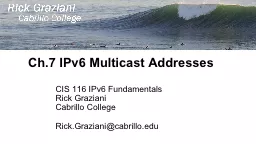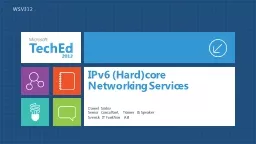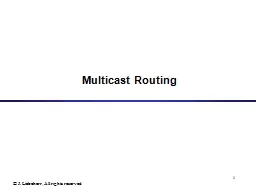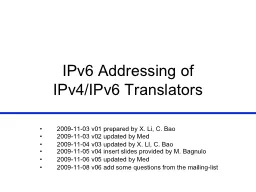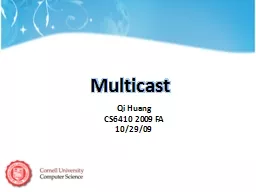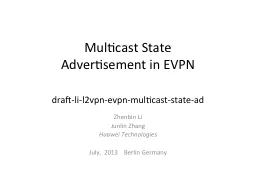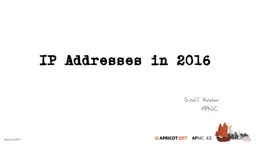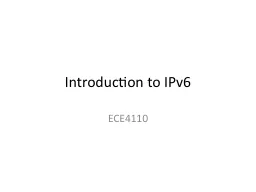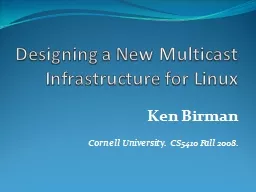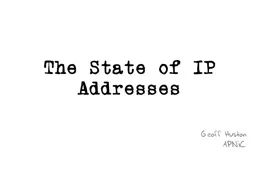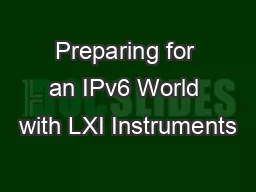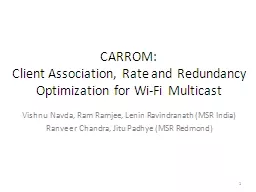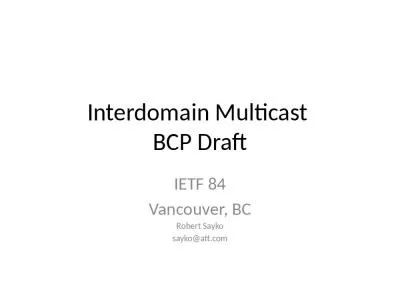PPT-Ch.7 IPv6 Multicast Addresses
Author : celsa-spraggs | Published Date : 2019-06-23
CIS 116 IPv6 Fundamentals Rick Graziani Cabrillo College RickGrazianicabrilloedu Purpose and Format of IPv6 Multicast Addresses IPv6 Addresses ff00 12 ff0200001ff00104
Presentation Embed Code
Download Presentation
Download Presentation The PPT/PDF document "Ch.7 IPv6 Multicast Addresses" is the property of its rightful owner. Permission is granted to download and print the materials on this website for personal, non-commercial use only, and to display it on your personal computer provided you do not modify the materials and that you retain all copyright notices contained in the materials. By downloading content from our website, you accept the terms of this agreement.
Ch.7 IPv6 Multicast Addresses: Transcript
Download Rules Of Document
"Ch.7 IPv6 Multicast Addresses"The content belongs to its owner. You may download and print it for personal use, without modification, and keep all copyright notices. By downloading, you agree to these terms.
Related Documents

